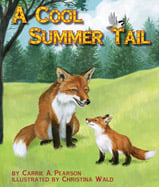Alignment to Standards for TX

| Grade | Number | Standard |
|---|---|---|
| 1 | 112.12 (b) (10) | organisms resemble their parents and have structures and processes that help them survive within their environments. |
| 1 | 112.12 (b) (10) (A) | external characteristics of an animal are related to where it lives, how it moves, and what it eats |
| 1 | 112.12 (b) (9) | the living environment is composed of relationships between organisms and the life cycles that occur. |
| 2 | 112.13. (b) (10) (A) | compare how the physical characteristics and behaviors of animals help them meet their basic needs such as fins help fish move and balance in the water |
| 2 | 112.13. (b) (8) (B) | identify the importance of weather and seasonal information to make choices in clothing, activities, and transportation |
| 2 | 112.13. (b) (9) (B) | factors in the environment, including temperature and precipitation, that affect growth and behavior such as migration, hibernation, and dormancy of living things |
| 3 | 112.14. (b) (10) | organisms undergo similar life processes and have structures that help them survive within their environments. |
| 3 | 112.14. (b) (10) (A) | explore how structures and functions of plants and animals allow them to survive in a particular environment |
| 3 | 112.14. (b) (10) (B) | some characteristics of organisms are inherited such as the number of limbs on an animal or flower color and recognize that some behaviors are learned in response to living in a certain environment such as animals using tools to get food |
| 3 | 112.14. (b) (9) | organisms have characteristics that help them survive and can describe patterns, cycles, systems, and relationships within the environments. |
| 4 | 112.15. (b) (10) | organisms undergo similar life processes and have structures that help them survive within their environment. |
| 4 | 112.15. (b) (10) (A) | explore how adaptations enable organisms to survive in their environment such as comparing birds beaks and leaves on plants |
| 5 | 112.16. (b) (10) | organisms undergo similar life processes and have structures that help them survive within their environments. |
| 5 | 112.16. (b) (10) (A) | compare the structures and functions of different species that help them live and survive such as hooves on prairie animals or webbed feet in aquatic animals |
| 5 | 112.16. (b) (10) (B) | differentiate between inherited traits of plants and animals such as spines on a cactus or shape of a beak and learned behaviors such as an animal learning tricks or a child riding a bicycle |
| 5 | 112.16. (b) (9) | there are relationships, systems, and cycles within environments. |
| 5 | 112.16. (b) (9) (A) | organisms live and survive in their ecosystem by interacting with the living and non-living elements |
| K | 112.11 (b) (10) | organisms resemble their parents and have structures and processes that help them survive within their environments. |
| K | 112.11 (b) (10) (B) | identify parts of plants such as roots, stem, and leaves and parts of animals such as head, eyes, and limbs |
| K | 112.11 (b) (8) (A) | observe and describe weather changes from day to day and over seasons |